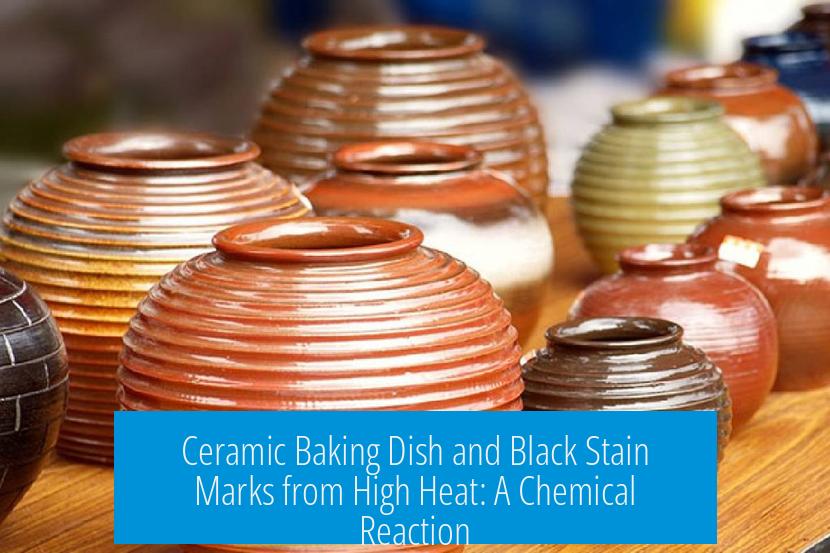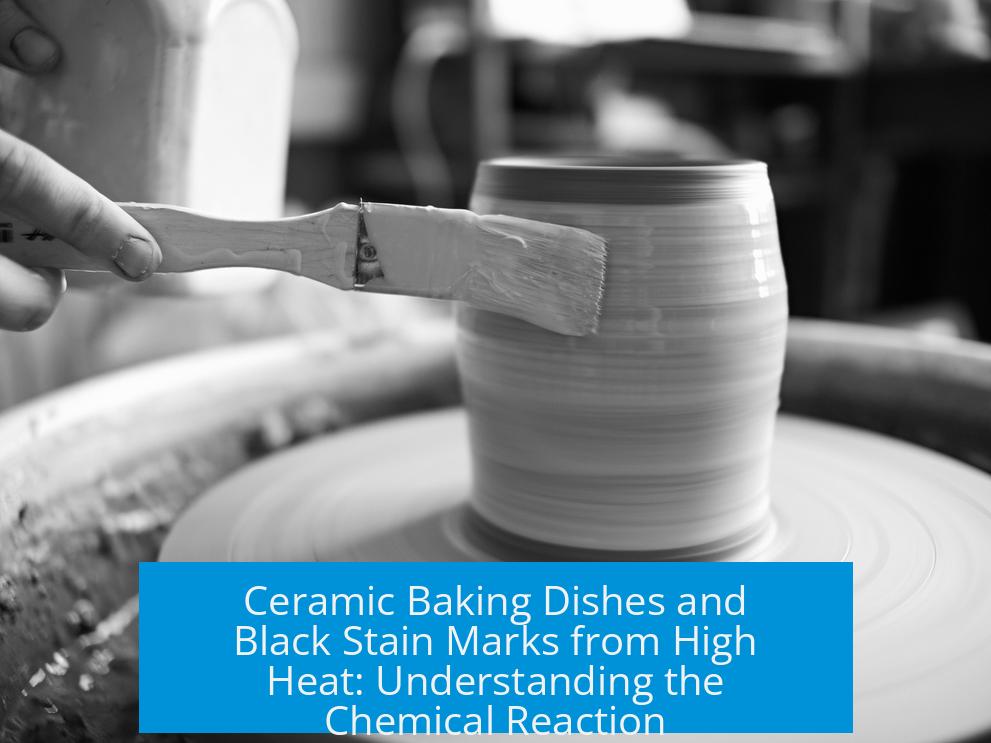Ceramic Baking Dish and Black Stain Marks from High Heat: A Chemical Reaction?

Black stain marks that appear on ceramic baking dishes after exposure to high heat result from thermal stress causing tiny cracks in the glaze. Moisture and organic residues penetrate these cracks, decompose into carbonaceous deposits, and become trapped, creating visible black stains.
Nature of the Ceramic Baking Dish Surface
Ceramic baking dishes often have a glazed surface. This glaze is essentially a glassy layer formed by firing the ceramic at very high temperatures. It creates a smooth, shiny, and inorganic coating that protects the dish and gives it a finished look.
The glaze’s glass-like nature means it cools faster than the underlying ceramic after heating. This differential cooling rate plays a crucial role in stain formation.
How Black Stain Marks Develop
The main cause of black stains is thermal stress. When the dish heats up and cools down, the glaze contracts quicker than the ceramic body underneath. This difference causes small cracks, called crazing, in the glaze layer.
- These cracks can be microscopic and invisible to the naked eye.
- Moisture and organic residues seep into these tiny fissures.
- At high temperature, organic materials break down into carbon, tar, or oily residues.
- When the dish cools, the cracks close slightly, trapping these black deposits underneath the glaze.
This process is not a direct chemical reaction between the ceramic and the residues but a physical interaction enhanced by heat and microdamage.
Cleaning and Removing Black Stains
Removing these stains can be challenging. Some methods include:
- Using solvents like acetone to dissolve oily residues burnt into the cracks.
- Applying commercial cleaners such as Bar Keeper’s Friend, which can abrade surface material and lighten or remove scuff marks.
- Employing stronger chemical processes like hydrogen peroxide treatments, although these carry risks of damaging the dish or the oven and have uncertain success.
Related Concepts and Analogies
The phenomenon resembles the cracking patterns seen in Raku pottery, where controlled thermal shock creates black crackled designs intentionally.
The thermal stress here is comparable to concrete cracking under stress—material expansion and contraction cause cracks to develop.
Key Takeaways
- Black marks arise from cracks in the ceramic glaze formed by thermal stress.
- Organic residues enter cracks, decompose, and form trapped carbon-based stains.
- Cleaning involves solvents or mild abrasives but risks exist with harsh chemicals.
- The process is physical microdamage with organic residue transformation, not a direct chemical reaction of the ceramic.
- Preventive care includes avoiding empty heating and minimizing thermal shock.
Why do black stain marks appear on a ceramic baking dish after high heat?
Heating creates tiny cracks in the glaze due to thermal stress. Moisture and organic residues enter these cracks and burn, leaving black stains under the surface.
Is the black stain a chemical reaction on the ceramic surface?
Not exactly. The stain forms from carbonized residue trapped in cracks, not a direct chemical change of the ceramic itself.
Can these black stains be removed safely?
Cleaning agents like Bar Keeper’s Friend may reduce stains. Solvents like acetone can help if oil residue is involved. Strong chemicals risk damaging the dish.
How does thermal stress cause glaze damage on ceramic dishes?
The glaze cools faster than the ceramic, causing stress and micro-cracks. This damage allows stains to set and can progress to visible cracking.
Are there safe methods to avoid black stain formation during baking?
Avoid heating an empty dish. Allow gradual cooling and avoid sudden temperature changes to reduce thermal stress and crack formation.





Leave a Comment